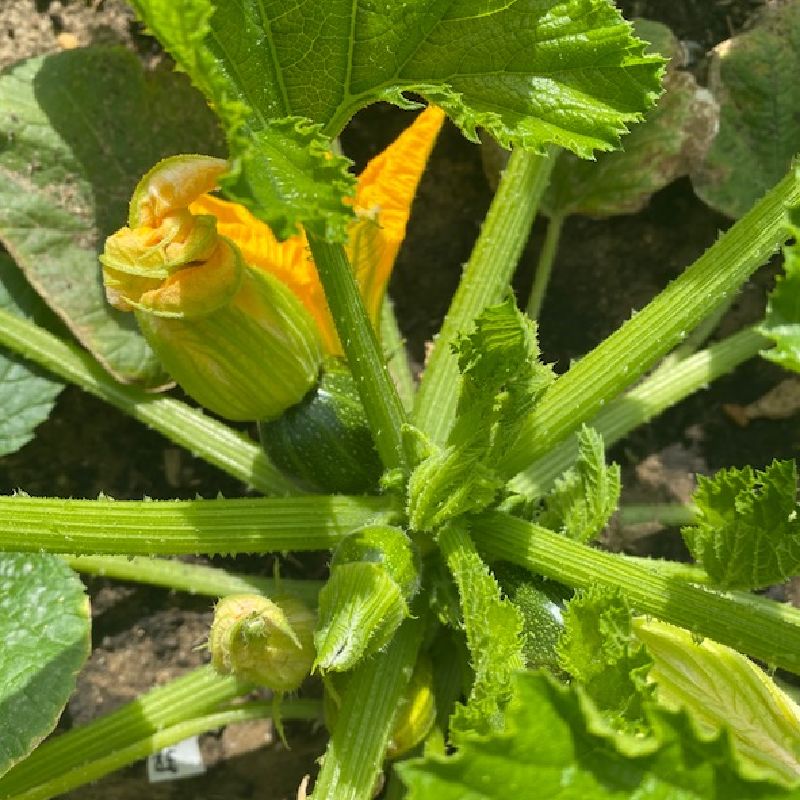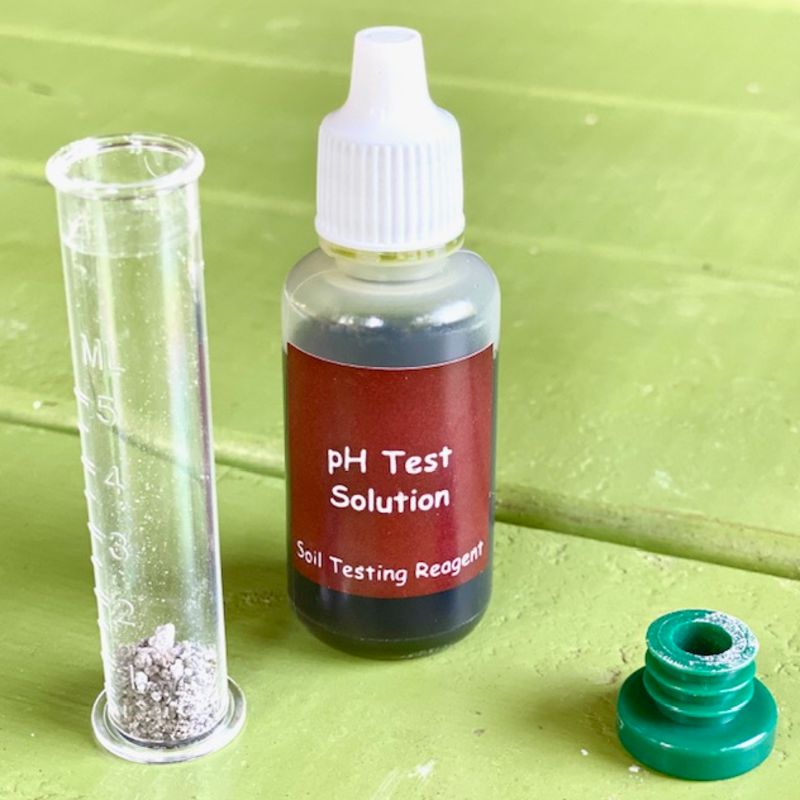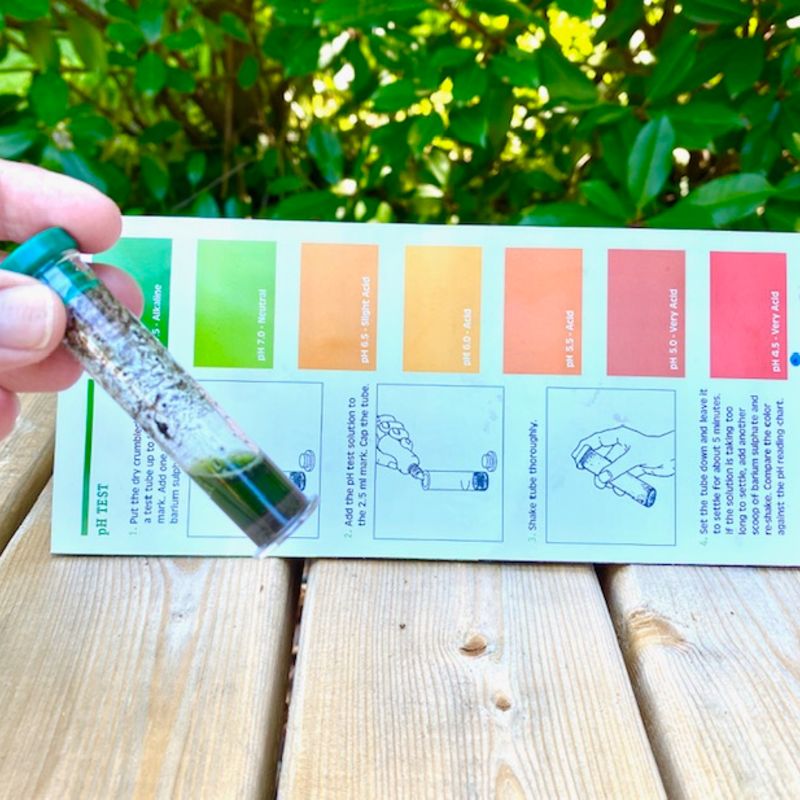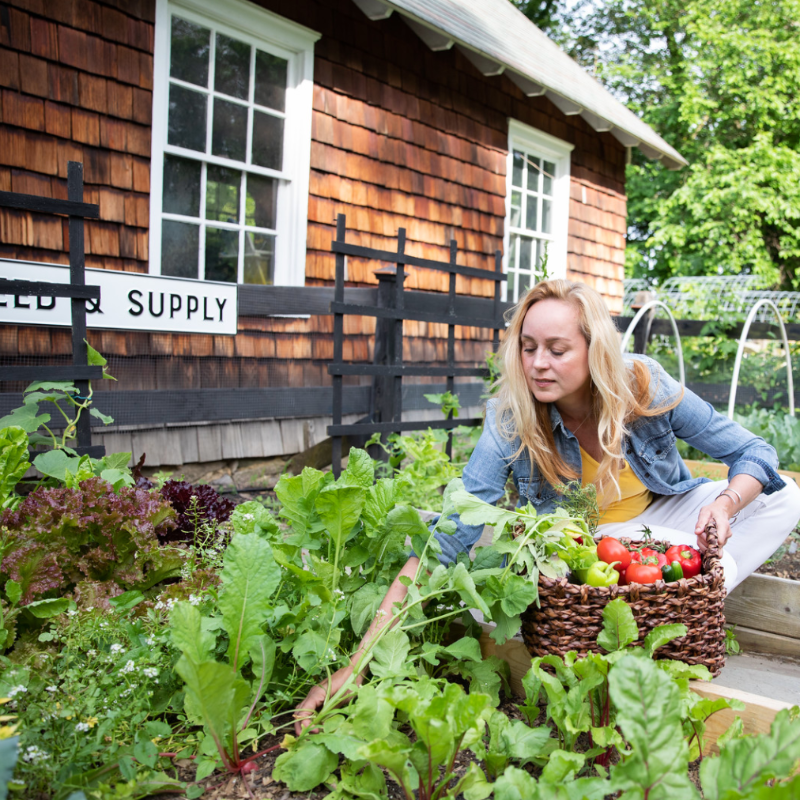Testing your soil seems super intimidating for most home gardeners. It also feels unnecessary – until something goes wrong. When you see your plants are suddenly not thriving and you’ve done everything you think you can do, it might be that your soil is out of balance. The first thing you want to check is your soil pH.
Most fruits and vegetables you’ll grow in your garden will like a fairly neutral pH, and if your soil pH is too acidic or too alkaline, your plants will struggle…and they won’t be able to tell you why!

Years ago, I ordered one of those soil pH readers and it was such a disappointment. I’m not convinced they work well, but soil testing scared me, so I used it for a while. Finally, I took the plunge and ordered a basic soil testing kit and I wonder what took me so long! It’s easy to use and the results are very specific and accurate. Clear results allow me to improve my soil without wasting money on the wrong fertilizer – or worse, standing around scratching my head and wondering what went wrong.
So let’s learn how to test our soil at home. Ready?
First, order a test kit. I love this one and I use it regularly to test the soil all over my garden.
This kit is also used to test the other three main components of soil health: nitrogen, potassium and phosphorus (we will learn how to test for those in another post!) You should get 80 tests out of this, or 20 of each for these four components.

To test your soil’s pH, you’ll need a soil sample first. Using a spade, dig down 2-3 inches and collect a couple ounces of soil. Spread it out on a paper towel in a sunny spot to dry.
Now let’s follow the package instructions together. Don’t worry. It’s not hard. First put a mere 1 ml in the test tube. It’s clearly marked on the side. (It’s very little! See the picture above.) Then add the liquid and the powder according to the instructions. Everything is clearly marked. And then make like Taylor Swift and “shake, shake, shake!” Allow the test to sit for a few minutes and then compare to the color chart in the box.
I tested two areas of my garden; one area where my plants are thriving and one area where everything is going wrong! Every thing I planted in the second bed ended up dead this season – which is very odd. I had a sneaking suspicion that the mulch I used last season had thrown my soil out of wack, but I needed to test to see exactly what was happening.

You can see from the pH test in my failed raised bed that my soil is off the charts alkaline!

And the results from the healthy section of my garden show a more balanced, slightly acidic pH – as expected.
Most vegetable plants in your garden will prefer a slightly acidic soil with a reading of 6 to 6.5 (7 is completely neutral, right in the middle.) If you discover that your soil is too alkaline, like mine, adding pelletized sulfur will help make your soil more acidic. If too acidic – pelletized lime will raise your pH making it more alkaline. Both of these products are available at most hardware stores or big box home centers. You can also have them shipped to your home by ordering lime or sulfur online. Don’t add any of this right in the middle of the growing season! You could harm your plants. As we winterize our gardens in the late fall, we will talk about how to alter pH properly and safely, as well as other organic and sustainable ways to improve your soil.
Don’t wait too long to test your soil. It’s an awful feeling to find out in July that the plants you lovingly planted and cared for in April and May are not going to make it. Test as soon as you can, giving us time to make corrections for the best possible future garden!

